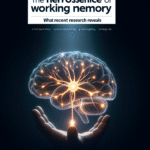
Spotting the Signs: How to Test for Learning Disabilities in Your Living Room – The Ultimate Guide
Introduction
In today’s fast-paced world, understanding the complex needs of our children is more important than ever. Learning disabilities can manifest in various ways, leaving both parents and children feeling frustrated and misunderstood. By spotting the signs: how to test for learning disabilities in your living room, you can take the first crucial steps toward fostering a supportive environment for your child’s growth. This guide will empower you to identify potential learning disabilities using simple, effective methods at home while offering insight into the best practices for nurturing your child’s unique strengths.
The Importance of Early Detection
Understanding Learning Disabilities
Learning disabilities (LD) are neurological disorders that affect the way individuals process information. They are often characterized by difficulties in specific areas such as reading, writing, math, or concentration. Detecting these issues early can significantly impact a child’s academic success, self-esteem, and overall well-being. According to the Learning Disabilities Association of America, approximately 1 in 5 people has learning disabilities, making it a common yet often under-recognized issue.
Case Study: A Real-World Example
Consider the story of Jamie, a seven-year-old who struggled significantly with reading and seemed disinterested in school. Jamie’s parents noticed he often avoided homework and displayed frustration during reading time. By employing simple tests and observations, they identified that Jamie exhibited signs of dyslexia. This early detection led to appropriate interventions and support. Today, Jamie is thriving academically and has developed a love for reading that his parents once thought impossible.
Spotting the Signs: How to Test for Learning Disabilities in Your Living Room
Key Indicators of Learning Disabilities
- Difficulty in Reading: Struggles with decoding words or following along in a text.
- Writing Challenges: Trouble with handwriting, spelling, or organizing thoughts on paper.
- Math Trouble: Difficulty understanding numbers, performing calculations, or grasping mathematical concepts.
- Attention Issues: Frequently distracted, forgetful, or easily bored during tasks that require focus.
Step-by-Step Testing Methods
Step 1: Create a Supportive Environment
Before starting any tests, ensure your living room is a calm, distraction-free space. Limit noise from television or other devices to help your child concentrate. Make sure to have all necessary materials on hand, including pencils, paper, and age-appropriate reading materials.
Step 2: Conduct Observational Assessments
Begin with a series of informal observations to gauge your child’s abilities. Over the course of a few days, note any patterns or behaviors that may indicate a learning disability:
| Observation | Possible Concern |
|---|---|
| Difficulty finishing homework on time | Attention issues or comprehension difficulties |
| Avoidance of reading out loud | Possible issues with decoding or anxiety |
| Frequent spelling mistakes or sloppiness | Potential writing challenges |
Step 3: Engage in Targeted Activities
Use targeted activities to assess specific areas:
Reading Assessment
- Choose a short age-appropriate text.
- Ask your child to read aloud, making note of any hesitations or mispronunciations.
- Ask questions about the text to evaluate comprehension.
Writing Assessment
- Provide a writing prompt.
- Observe their ability to express ideas and the quality of their handwriting.
- Evaluate spelling and grammar.
Math Assessment
- Create a simple math quiz using everyday items, like candies or toys.
- Note their ability to count, add, and subtract.
Documenting Observations and Results
Keep a detailed record of your assessments. This documentation will be invaluable during further discussions with educators or specialists. Consider creating a simple chart to summarize your findings:
| Skill Area | Observed Behavior | Notes |
|---|---|---|
| Reading | Frequent hesitations | Potential dyslexia signs |
| Writing | Inconsistent spelling | Possible writing disabilities |
| Math | Difficulty with addition | Suggests learning challenges |
| Attention | Distracted easily | May indicate ADHD |
Further Steps After Testing
Consulting with Professionals
If your home assessments raise concerns, it may be time to consult a specialist. A psychologist or educational therapist can perform a more thorough evaluation. Collaborating with teachers can also provide insights into your child’s performance in school settings.
Accessing Resources and Support
Numerous resources are available for both parents and children dealing with learning disabilities. Organizations such as the International Dyslexia Association and the National Center for Learning Disabilities offer valuable information, support, and advocacy opportunities. Taking advantage of local support groups can also provide a community for sharing experiences and strategies.
Case Study: Finding Support
When Lisa, a mother of two, discovered her son had learning disabilities, she sought resources and joined a local support group. Lisa learned effective strategies to support her son at home and even advocated for accommodations at school. Her proactive approach not only improved her son’s academic performance but also empowered her as a parent.
Creating a Positive Learning Environment at Home
Incorporate Multisensory Learning
Utilizing multisensory teaching methods can significantly benefit children with learning disabilities. Consider integrating visual aids, hands-on activities, and auditory learning experiences into your home routine.
Establish Routines
Children thrive on structure. Creating a daily routine that prioritizes study time, playtime, and restful activities can help establish healthy habits and improve focus.
Celebrate Progress
Regardless of the challenges your child faces, recognizing and celebrating small milestones can boost their confidence and motivation. Whether it’s completing a reading assignment or mastering a math concept, every achievement counts.
Conclusion
By spotting the signs: how to test for learning disabilities in your living room, you empower yourself and your child to foster an effective and nurturing educational environment. Early detection is pivotal; the sooner you address potential challenges, the better equipped your child will be to overcome them. Through observation, assessment, and support, you can help your child thrive academically and socially.
Motivational Takeaway
Every child is unique, with their own set of strengths and challenges. Your proactive efforts in identifying and understanding learning disabilities are not just about academic performance—they’re about nurturing a child’s self-esteem and fostering a lifelong love of learning. Together, you can break down barriers and unlock limitless potential.
FAQs
1. What should I do if I suspect my child has a learning disability?
Start by observing your child’s behavior and academic performance at home. Conduct informal assessments as described above and document your findings. If you remain concerned, consult a professional for a full evaluation.
2. How can I help my child at home?
Create a supportive learning environment, utilize multisensory learning techniques, and establish a consistent homework routine. Ensure that you celebrate their progress, no matter how small.
3. Are learning disabilities hereditary?
Research suggests a genetic component to learning disabilities, meaning they can run in families. If other family members have learning challenges, your child may be at a higher risk.
4. What resources are available for parents?
Organizations such as the Learning Disabilities Association of America and local support groups offer resources, information, and community support for families facing learning disabilities.
5. Can learning disabilities be overcome?
While learning disabilities typically cannot be "cured," many children can learn strategies and techniques to navigate their challenges successfully, thriving both academically and socially.
By following this guide on spotting the signs: how to test for learning disabilities in your living room, you are taking important steps to support your child’s unique learning journey. Remember, every parent has the power to make a difference in their child’s life, and with the right tools and insights, you can pave the way for their success.
















